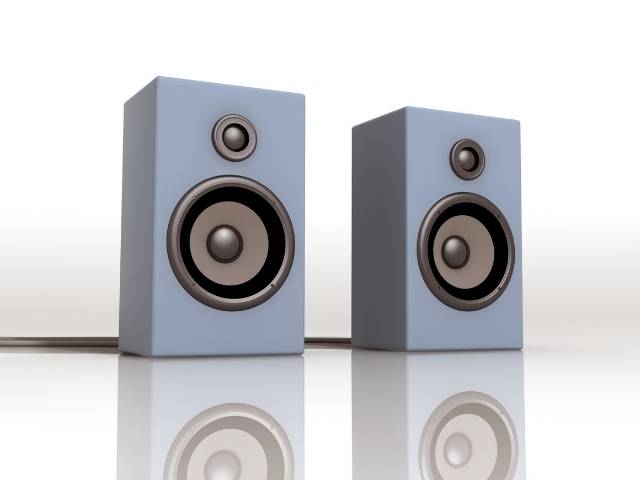The first 12-inch LP (long-playing vinyl record) had its first public demonstration on June 20th, 1948 at the Waldorf-Astoria hotel in New York. And, to this date, there are still many people who play vinyl because it’s simply a great piece of engineering that can produce great sound if the right equipment is used.
How vinyl records can play stereo audio is when stereo is recorded on a vinyl record, the sum of left and right audio is recorded in the horizontal direction, and the rest is recorded in the vertical direction. This way, you can get the left signal as well as the right signal that gets you stereo audio.
This article will discuss how vinyl records play stereo audio, how vinyl records work, how stereo records work if vinyl records are mono or stereo, whether mono or stereo is better, how to identify if you’re listening to mono or stereo, and what panning is.
Vinyl Records Playing Stereo Audio
To answer the question “How do vinyl records play stereo audio?” you must first be aware of the fact that vinyl records play both mono sound as well as stereo sound.
Vinyl mono records were recorded with sound in the horizontal direction. In order to record stereo on a vinyl record, they recorded the sum of left and right is recorded in the horizontal direction, and the rest is recorded in the vertical direction (source).
So, this is how, with one single needle, you can get the left signal by having a pickup in the up-and-out direction and the right channel in the down-and-in direction. This might sound complicated, and if you don’t fully understand, don’t worry; I will explain exactly how vinyl records work further along in this article.
If you are just getting started with vinyl have a look at our selection of the best turntables with built-in speakers.
How Do Vinyl Records Work?
In order to figure out why vinyl record players can play stereo audio, it is essential to understand how vinyl records work in the first place. In the next sections of the article, I will delve deeper into how stereo records work so you will have a full picture of both. But first: The Vinyl Record Player.
Vinyl records change sound vibrations into electrical signals because they are electromagnetic devices. If you’ve ever seen a vinyl record play, you know that the record spins around, which creates a sound vibration that gets converted into electrical signals.
In turn, these signals are going into electronic amplifiers. These will supply the resulting sound into speakers that will increase the sound and make it louder.
How Do Stereo Records Work?
Stereo stands for stereophonic sound, which is a system of sound reproduction that produces an illusion of multi-directional sensory perspective.
The way this is accomplished is usually by using two or more objective audio channels through an arrangement of two or more amplifiers (or headphones) in such a way as to create the idea of sound heard from different directions; I will go into this some more in the next section of the article.
Are Vinyl Records Mono or Stereo?
As you might have guessed by now, the answer is that vinyl records can be either mono and stereo. All records were mono before 1957, and after stereo became available, both mono and stereo were available for many albums for many years.
The stereo versions were usually more expensive.
Eventually, it turned out that it was too inconvenient to have both versions in the inventory and the stereo one became the norm. Mono records still existed, but they became less available.
Many vinyl records still kept the “stereo” mark on the sleeve or cover even though they were practically all stereo.
So What Do Mono and Stereo Mean?
Mono sound uses one signal, whereas stereo sound uses more than one signal (usually two). Mono sound can still be played, of course, through several speakers, but it will still be coming from the one copy of the signal.
Stereo sound works like this: You can make one signal go to one speaker and let the other signal go to the other speaker.
You had probably listened to a song before with headphones and heard the guitar in one ear and voice in the other. With mono sound, the sound you hear in each ear is identical.
Is Mono Better Than Stereo?
The benefit of stereo sound is that it tries to emulate the sound you would hear if you were attending a live concert since different sounds would come from different directions.
Listening to stereo sound would be preferable if you are at home, listening to music through a pair of headphones. For stereo to be heard well, two or more speakers are necessary. If you are listening from one speaker (at home or elsewhere), it can only be mono.
However, say that you’re attending a real-life concert, it would be desirable to have the speakers play mono sound. If many people are attending, it can otherwise be quite difficult to ensure that all of them hear all sounds from two or more speakers.
Remember that mono isn’t of lesser quality than stereo; it simply just works differently. So to say which one is better? Well, it depends on the situation.
How To Know if Your Audio Is Mono or Stereo
If you want to know whether you’re listening to mono audio or stereo audio, it’s quite easy to find out. Turn on the audio in question and close your eyes.
Try to identify where the instruments/vocals that you hear are coming from. How are they reaching your ear? This is particularly easy to do if you’re listening with headphones.
- Mono: So, if you’re listening to mono audio, the sound will come from one ‘source’ and should sound identically in both ears. Mono means ‘one,’ and all of the sounds that are used to make the song are distributed equally.
- Stereo: If you’re listening to stereo audio, you will hear some sound coming into your left ear and others in the right ear. You could be hearing the vocals in one ear and (some of them) instruments in the other ear. The sounds are basically spread out.
What Is Panning?
The next big thing that came after stereo audio was panning. Panning is when the volume from one speaker is altered so that the sound is more prominent in this particular speaker.
Think about stereo audio again: The sounds are distributed through two or more speakers unequally so that you hear some of the instruments in one ear and the rest in the other.
Now imagine that you will hear the sounds more prominently in one of your ears because the volume is louder.
What Does It Do?
You might recognize hearing panning done before in a song you’ve listened to. If you haven’t, you might wonder: What is the benefit of it? What panning does to a song is to create depth and a sense of space, making the overall sound more interesting.
The sound will appear to be coming from different places, which can really elevate the listening experience.
Final Thoughts
Vinyl records have been a piece of great work of engineering which has been around for about 70 years. They are still used today and in fact, are experiencing a resurgence in popularity. There isn’t much technology out there that you can say the same about.
Vinyl records can play mono as well as stereo audio. Still, they manage to play stereo audio because when stereo is recorded on a vinyl record, the sum of left and right is recorded in the horizontal direction.
The rest is recorded in the vertical direction. This way, you‹ can get the left signal as well as the right signal that gets you stereo audio.

